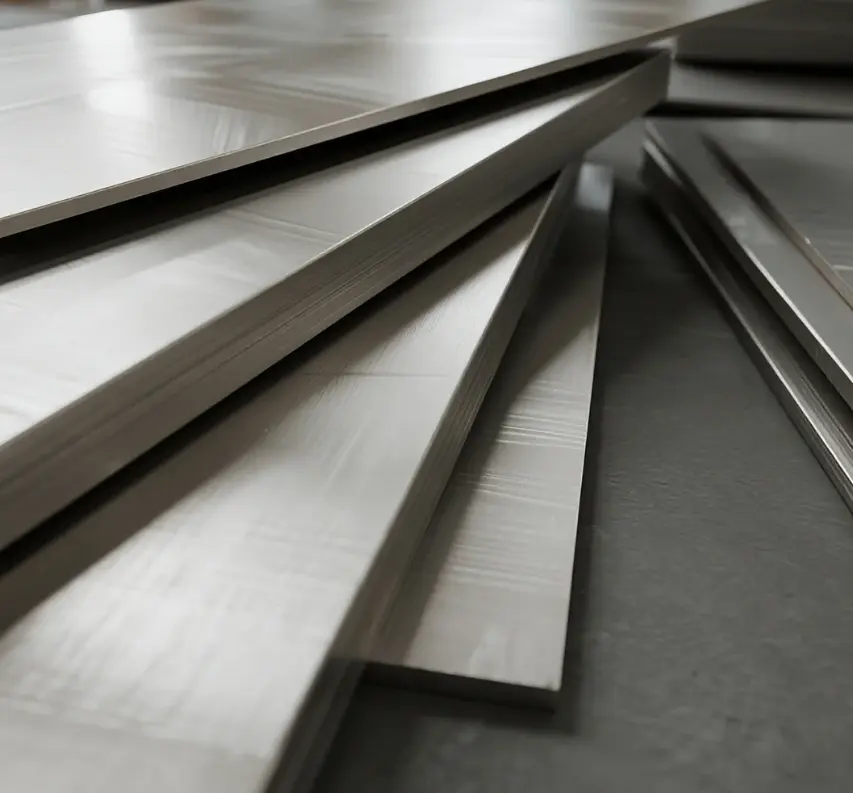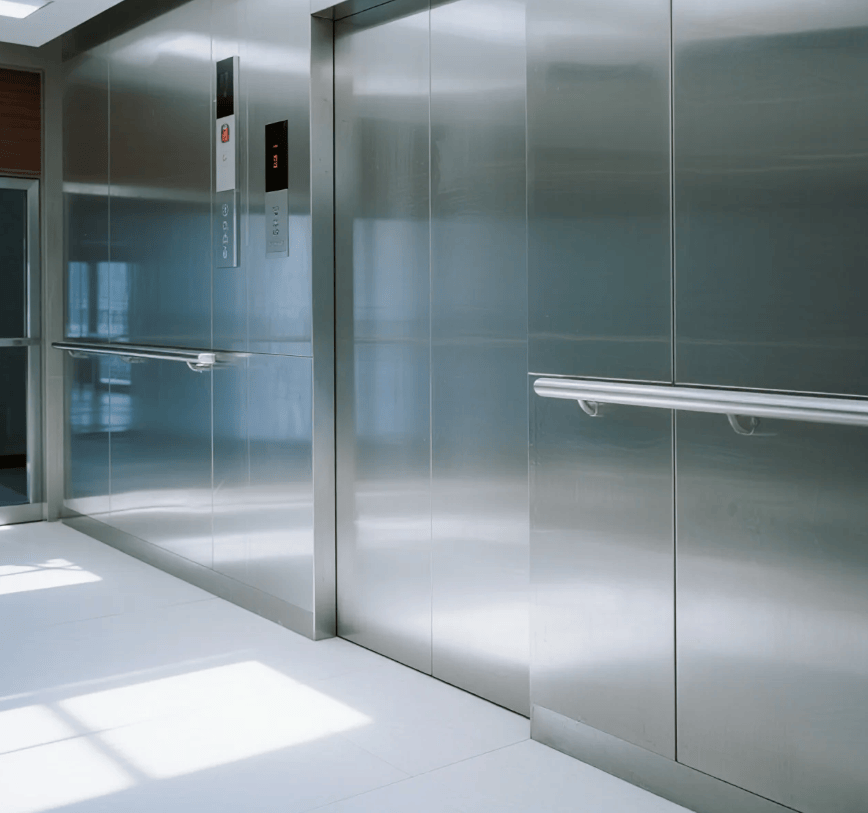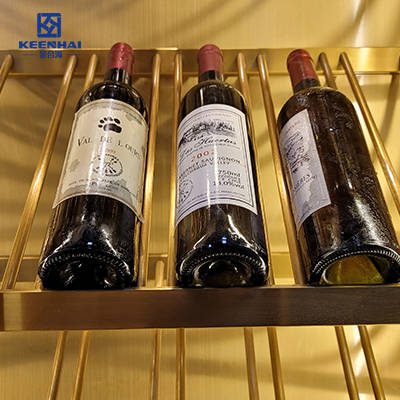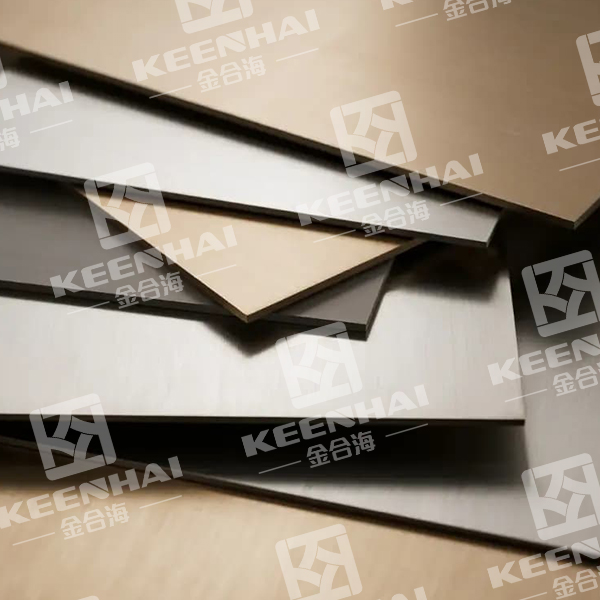Yes, inox can rust under certain conditions.Stainless steel, often called inox, forms a chromium oxide film that blocks rust. But when that layer is damaged or covered with grime, rust can still occur. Spotting early signs like brown stains or pitting and acting quickly can keep inox in good condition.
Environmental Factors Leading to Rust
Chloride-Rich Conditions like Coastal Areas
When inox is installed near the ocean, the constant presence of chloride ions in sea spray and humid air slowly damages its protective chromium oxide film. Even high-quality stainless steel sheet can show small pitting marks within 1–2 years if exposed without cleaning. In coastal buildings, railings made of 304 grade often require polishing every 6–12 months, while 316 stainless steel with molybdenum lasts 5–8 years before visible rust appears. The aggressive salt environment makes grade selection critical, especially for outdoor installations where surface maintenance is irregular.
Industrial Pollutants and Harsh Chemicals
Inox can also corrode in urban or factory zones where sulfur dioxide, hydrochloric acid fumes, or alkaline residues accumulate on the surface. Research from the World Corrosion Organization notes that airborne industrial pollutants increase corrosion rates by 30–50% compared to clean rural environments. For instance, a stainless steel metal plate used in chemical plants often needs passivation or protective coatings to maintain its lifespan beyond 10 years. Without such treatment, exposure to chlorine-based cleaning agents or chemical splashes can lead to stress cracking and localized rust within months.
Moisture and Poor Ventilation
Constant dampness accelerates rust formation because trapped water blocks oxygen from renewing the passive film. In kitchens or storage areas with poor ventilation, steel sheet stainless surfaces may develop orange discoloration in less than 18 months. A study in food-processing facilities showed that inox panels near steam outlets corroded 40% faster compared to panels in dry sections. Regular airflow combined with simple cleaning steps like wiping surfaces dry every day can dramatically extend the service life, cutting maintenance costs by 20–25% annually.

Grades of Inox and Their Resistance Levels
304 roestvrij staal
The 304 roestvrij staal grade is the most widely used form of inox. It contains around 18–20% chromium En 8–10.5% nickel, two crucial alloying elements that help slow down corrosion in everyday environments. In kitchens, restaurants, and hospitals, people often choose stainless steel sheet in 304 because it balances cost and durability. However, in chloride-rich areas like coastlines, 304 can start showing pitting rust in as little as 2–3 years if cleaning and care are neglected.
316 roestvrij staal
The 316 roestvrij staal grade stands out because of its 2–3% molybdenum content, which drastically increases its resistance to chlorides. According to marine engineering studies, 316 performs nearly 10 years longer than 304 in seawater spray zones. For industries such as shipbuilding, desalination, or chemical processing, stainless steel metal plate in 316 is the preferred choice despite its higher cost, because repairs and replacements are far more expensive in the long run.
Other Inox Grades and Specialized Applications
Other grades like 310, 321, and duplex stainless steels bring specific advantages. For example, 310 stainless can withstand temperatures up to 1,150°C, making it indispensable in furnaces. Duplex steels, which combine austenitic and ferritic structures, deliver twice the strength of standard stainless steel and outstanding resistance in oil and gas pipelines. These performance differences highlight how material selection directly determines lifespan and cost efficiency in demanding environments.
Comparison Table of Resistance Levels
| Inox Grade | Chromium % | Nickel % | Molybdenum % | Chloride Resistance | Typical Lifespan in Coastal Areas |
|---|---|---|---|---|---|
| 304 | 18–20 | 8–10.5 | 0 | Moderate | 2–3 years without maintenance |
| 316 | 16–18 | 10–14 | 2–3 | High | 8–10 years before major rust |
| Duplex 2205 | 22 | 5 | 3.2 | Very High | 12–15 years with minimal upkeep |
316 stainless steel proves far more reliable than 304 in coastal or industrial zones, while duplex alloys stretch service life even further when strength and rust resistance are top priorities.

4. Common Situations Where Inox Can Rust
4.1 Rust Spots on Kitchen and Food Equipment
Even though inox is widely chosen for kitchen surfaces, cooking tools, and large food equipment, rust can still appear when certain conditions line up. The main trigger is constant contact with salty or acidic substances such as tomato juice, vinegar, or soy sauce. These liquids break down the protective chromium oxide film that normally shields the alloy. Once the film gets damaged, small orange-brown rust spots start showing up within weeks if cleaning is ignored.
Take for example industrial dishwashers used in restaurants. The water inside often carries a chloride content above 50 ppm, which accelerates surface staining. Studies from food safety inspections in Europe show that nearly 37% of stainless steel sinks in high-volume kitchens develop rust patches within the first 18 months when no systematic maintenance routine exists.
To reduce the risk, operators follow a set of practical steps:
-
Rinse food preparation surfaces immediately after exposure to acidic ingredients.
-
Use mild alkaline cleaners instead of bleach, since bleach leaves chloride residues.
-
Dry equipment thoroughly, especially in seams and corners where water sits longer.
When large installations such as Elevator Door systems inside hotels use inox finishes, cleaning teams often apply similar protocols because lobby areas face heavy humidity from air conditioning. This overlap shows how environments beyond the kitchen can lead to similar spot rusting if moisture lingers.
4.2 Pitting in Marine Applications
Marine environments create one of the harshest tests for inox because seawater combines three destructive factors at once: chlorides, oxygen, and constant wetting cycles. When ships, harbors, or offshore platforms use standard 304 grade, tiny holes known as pits begin forming after 6–12 months of saltwater exposure. These pits may start at just 0.1 mm in diameter but can grow deep enough to compromise the structure of railings, tanks, or bolts.
Engineers often describe this as a “weak point attack.” The chloride ion penetrates the passive layer, and instead of spreading evenly like surface rust, it digs into very small areas, creating concentrated damage. Once the pit forms, it becomes nearly impossible to stop without replacing the affected section. Data from naval construction guidelines show that switching from 304 to 316 stainless steel extends service life from 2 years up to 9–10 years in direct seawater splash zones.
Some marine operators now invest in duplex stainless steels because their dual-phase microstructure combines strength and chloride resistance. However, these upgrades raise material costs by 20–35% per metric ton. That balance between budget and performance drives many procurement decisions for ports and shipbuilders.
When companies purchase a Roestvrijstalen product from suppliers such as pvdstainlesssteel, they often ask for certifications proving corrosion testing in simulated seawater environments. This ensures the chosen metal plate or sheet can realistically handle long-term exposure without early pitting failures.
4.3 Stress Corrosion in High-Temperature Settings
High-temperature industries like chemical refineries, energy plants, or even commercial kitchens with heavy steam environments create a different type of inox rust problem known as stress corrosion cracking (SCC). Unlike surface rust, SCC combines mechanical stress, heat above 60°C, and corrosive chemicals to produce deep cracks that travel along the grain boundaries of the alloy.
For instance, pressure vessels built with 304 stainless steel in fertilizer plants often show hairline fractures within 5–7 years of operation when exposed to ammonia-based compounds. These fractures may not be visible on the outside at first, but ultrasonic inspection reveals a network of tiny cracks spreading through the wall thickness.
Laboratory tests have shown that at 80–100°C, the presence of chlorides as low as 25 ppm can start the cracking process, especially when bolts or welds are under tension. Once SCC begins, it propagates at a speed of 0.01–0.1 mm per year, eventually leading to leaks or catastrophic equipment failure.
Industries respond with three main strategies:
-
Replacing standard grades with high-nickel alloys or duplex steels to withstand heat and stress.
-
Designing equipment with fewer welded joints since weld zones often act as crack initiation points.
-
Applying surface treatments such as shot peening to reduce tensile stress at the surface.
Energy plants that purchase large inox rust-resistant components usually request special testing under both high pressure and high chloride exposure before installation. This step adds cost but avoids unplanned shutdowns that could easily exceed $100,000 per day in lost productivity.

5. Preventive Maintenance Practices for Inox
5.1 Routine Cleaning Methods
Inox doesn’t stay flawless on its own. Kitchens, factories, and marine sites all need a cleaning plan to slow down rust formation. The protective chromium oxide layer is self-healing to a point, but grease, salts, or acid spills block its recovery. Regular cleaning ensures that layer has a chance to regenerate.
A simple weekly routine works for most food service areas:
-
Wipe surfaces with warm water mixed with a mild alkaline detergent.
-
Rinse with clean running water to remove residues.
-
Dry thoroughly with microfiber cloths to prevent water spots.
-
For stubborn stains, use a paste of baking soda instead of steel wool, which scratches the surface.
Professional kitchens usually follow ISO hygiene standards requiring daily rinsing of stainless worktops exposed to vinegar, citrus, or soy sauce. Studies show this reduces visible rust spots by over 40% in the first year. For large surfaces such as a Roestvrijstalen plaat, a rotating cleaning schedule every 48 hours is common because flat panels trap more water droplets compared to curved cookware.
5.2 Protective Coatings and Surface Treatments
When inox sits in harsh conditions like outdoor railings, swimming pool ladders, or refinery pipelines, cleaning alone won’t cut it. Here coatings come into play. Thin polymer layers, nano-ceramic sprays, or even PVD (Physical Vapor Deposition) finishes add extra defense.
The PVD technique bonds a metallic film on top of the inox surface, boosting hardness up to 2,000 HV (Vickers scale), compared to around 200 HV for untreated 304 steel. This not only prevents scratches but also keeps the chloride ions from sinking into the grain boundaries. Companies like pvdstainlesssteel often recommend these coatings for architectural Stainless Steel Product lines, such as wall claddings or decorative trims in humid zones.
Common application process includes:
-
Cleaning the inox surface with solvents to remove oils.
-
Loading parts into a vacuum chamber.
-
Vaporizing titanium, zirconium, or chromium target metals to bond onto the surface.
-
Curing under controlled pressure and temperature to achieve a uniform layer.
Once applied, the coating extends maintenance intervals from monthly polishing to yearly inspections, saving both time and labor costs.
5.3 Environmental Control and Handling Practices
Beyond cleaning and coating, environment management plays a critical role. Moisture, poor ventilation, and trapped salts are the real enemies of inox. Warehouses and kitchens that ignore airflow usually see rust first around hidden corners or under equipment feet.
To counter this, facilities adopt simple but effective measures:
-
Install exhaust fans to lower humidity below 60%.
-
Use dehumidifiers in closed storage spaces during wet seasons.
-
Keep chloride-containing cleaners, like bleach, stored separately from stainless tools.
-
Elevate large steel sheet stainless panels off the ground to avoid standing water contact.
In marine zones, engineers design equipment stands with 3–5 cm clearance above flooring to reduce constant splash exposure. That small gap often adds years of life expectancy for pumps and control boxes. Similarly, transport companies wrapping inox cargo for overseas shipping now use desiccant bags inside containers, a method proven to cut surface corrosion risk by over 50% during 30-day voyages.
For more detailed information on PVD stainless steel and its rust resistance, visit our comprehensive guide: What is a PVD stainless steel sheet?







